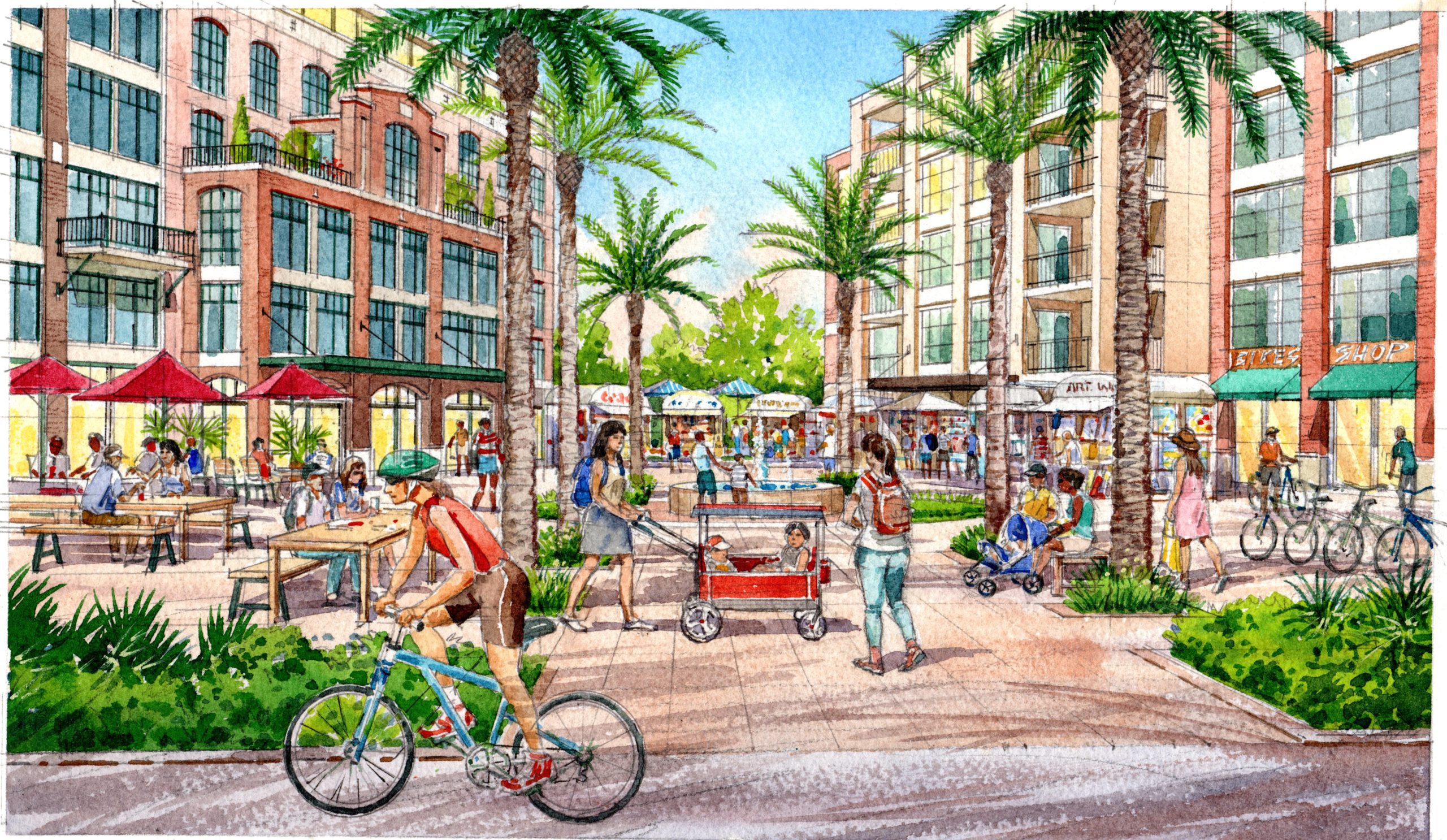
When Miami developer Joe Furst purchased about seven acres of mostly vacant land along the 22nd Street South corridor in St. Petersburg, he knew he’d need to get community support for any meaningful redevelopment proposal.
The area, between 1st Avenue South and 6th Avenue South, is a few blocks north of The Deuces Main Street, a main street of commerce in a historically Black community, and leaders there want to make sure nearby development keeps their community in mind.
Furst’s real estate development company, Place Projects, had not previously done work in St. Petersburg, and Furst knew he would have to show that he understood the needs of residents and businesses along the Corridor to earn community support.
There was also an added twist: The underlying traditional industrial zoning was so strict that it would not allow for many of the things community members said they want, such as affordable workforce housing, storefronts and vibrant foot traffic.
For Furst to accomplish his vision, which included light industrial uses (think distilleries and facilities for local makers) alongside residential and retail, the City of St. Petersburg would need to create an entirely new zoning category – Industrial Mixed Use.
B2’s solution
Furst hired B2 for public engagement to help get feedback from the community, and to help him with communications while the City went through the complicated process of creating an entirely new type of industrial zoning dubbed “IMix.”
B2 and public relations partner Brigitta Shouppe crafted messaging about the project, highlighting how the project would be an attractive, suitable way to use what is now vacant land. B2 helped Furst deliver the messaging succinctly, worked with the media to get the word out about the potential change, and created an informational website for people to learn more and share their thoughts about the project.
B2 also worked with Furst to do scores of one-on-one meetings with community thought leaders, leading to support from The Deuces Live, the Warehouse Arts District Association, and nearby business owners like Mike and Leigh Harting of Three Daughters Brewing and Shannon O’Malley of Brick Street Farms.
With the surrounding community largely supporting the goals and ideas, B2 worked with Furst to engage four levels of local government to start getting staff and elected officials in the know about the proposal long before anything comes up for a vote.
Success
So far, the public engagement project has gained wide support from residents and businesses along the Corridor and from City leaders, helped in large part by Furst’s commitment to spend the time required to hear from a wide range of community stakeholders and to seek win-win solutions for neighbors throughout the area.
After months of this work, B2 helped Place Projects announce the project publicly, leading to informative coverage from media outlets like the St. Pete Catalyst and St. Pete Rising, and then held a well-attended informational meeting for the community via Zoom.
Furst continues to work with the City on creating a new iMix zoning classification, and once that process is complete, he plans to move forward in designing specific site plans and getting zoning approvals. The hoped-for result will be new light industrial workplaces, attainable housing and appealing retail that will serve as a “bridge” between the Grand Central District to the north, and the Warehouse Arts District and the Deuces Live to the south.
